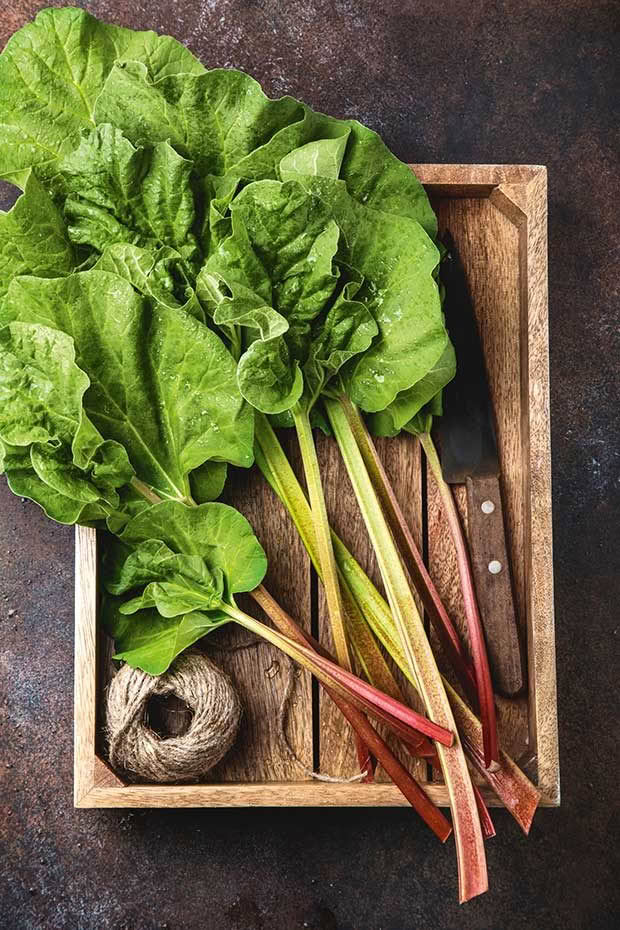8 expert gardening tips for growing great rhubarb in New Zealand conditions

Give your tastebuds a treat and plant rhubarb. This herbaceous perennial grows in all parts of the country, including cool spots, for much of the year. It dies back in winter and re-emerges in spring, once the weather has warmed up.
Words: Jane Wrigglesworth
1. Choose a sunny spot with good drainage. Dig deep and add plenty of organic matter like compost and aged manure, as rhubarb likes a deep, rich, friable soil.
2. It prefers a more acid soil (pH 5.0-6.5) – don’t plant it near concrete paths or edgings as lime from the concrete can leach out and raise your soil’s pH.
3. Add a high-nitrogen fertiliser such as fishmeal or blood and bone a week or two before planting.
4. Space plants about 1m apart and water in after planting.
5. Apply a mulch of compost around plants to retain moisture, but keep it clear of the crowns as they can rot.
6. Water regularly and feed with a liquid fertiliser once every 2-4 weeks. Short, thin stems are caused by poor nutrition and overly warm growing conditions.
7. Don’t harvest your plants in the first year as they need the energy to develop strong root systems. You can begin harvesting in the second year but pick only one or two stems from each plant. In the third year, go for your life. Pick the outside stems first, grabbing them near the base of the plant and pulling.
8. Always leave one or two stems on each plant; the remaining leaves will continue to feed the plant.
CAN’T GET YOUR STALKS TO REDDEN UP?
Try to ‘force’ plants in winter or early spring. Some commercial growers have perfected the art of rendering ruddy stems by banishing light and raising the temperatures.
The plants are fattened out in the field for two to three years. When they go dormant in winter, they’re brought indoors to a specially designed dark room. At this age, the plants have enough food reserves to enable them to produce stalks when the heat is turned on. When the stalks emerge, they glow pinky-red, as the green chlorophyll in the plants can’t develop without light. The stalks are also less tart and more delicate in flavour.
Home gardeners can replicate these conditions by simply placing a large bucket or pot over their rhubarb plants once shoots have emerged in spring. The plant should grow more rapidly and you can be picking fresh stems within four weeks. But don’t force the same plant in its second year as it as forcing weakens the plant. Move on to another.
MORE HERE
Love this story? Subscribe now!
 This article first appeared in NZ Lifestyle Block Magazine.
This article first appeared in NZ Lifestyle Block Magazine.
